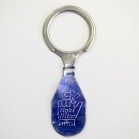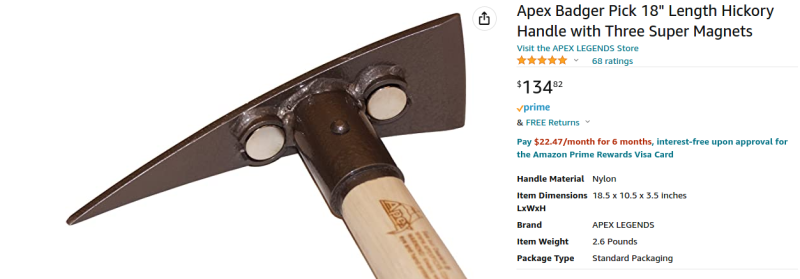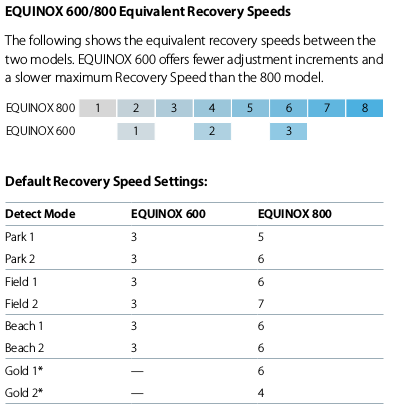-
Posts
5,842 -
Joined
-
Last visited
Content Type
Forums
Detector Prospector Home
Detector Database
Downloads
Everything posted by GB_Amateur
-

Gold & Relic Hunting With The Minelab GPX 6000
GB_Amateur replied to abenson's topic in Metal Detecting For Coins & Relics
Nice video, Andy. In particular I like the educational part, where you explain your goals, your approach, the setup, how you interpret the sounds, what fools you, etc. And I always appreciate seeing junk recoveries as well as the eye candy -- real detecting! You mention Indian Head cents as being among the low tones you dig. Do you mean the 95% coppers as well as the 12% nickel IHP's, and if so do 95% copper Lincolns also fall in the low tones, particularly the earliest Wheats which ID a bit lower (conductivity) on the IB/VLF's than the later ones? BTW, I was hoping the wind here in Eastern Nevada would be lighter, but not so far. -

Forum Members Hunt Together Sometimes
GB_Amateur replied to Jeff McClendon's topic in Metal Detecting For Coins & Relics
Thanks, Jeff, and I know you are headed back to see your Mom. I hope she is doing well and that you get some time to detect while there. Regarding my experience with the Deus 2 w/9" coil (and thanks again for letting me use it for 2 hours), I really am not in position to say much in terms of my evaluation/review of it, but here are a few comments. 1) Because I was swinging the lightweight Tesoro Vaquero w/6" concentric I didn't notice a contrast with the weight. I likely would have if I had been swinging the Equinox, though. But with 9" coil I found it nicely balanced. I had no problems reading the VDIs (small format) nor did I have any trouble viewing them before they disappeared. I didn't notice EMI except when other detectors were really closeby (a few feet). 2) Jeff set everything up (General program, 5 tones, 95 gain, 2.5 reactivity) and I never touched any of the buttons other than increasing the volume of the headphones. 3) I wanted to see what the VDIs corresponded to so I dug a lot of targets when that was 60 or above. (USA 'nickel' 5 cent hits at 62.) Jeff warned me that pulltabs can be all over the place, and they were! Beavertail-only were ~60 and ring only were in the mid 70's but modern 'racetrack' seemed to be in muliple places. Ring+beaver had different VDIs depending upon how the beavertail was bent, whether or not anything was broken, etc. That is more/less typical with my other detectors. 4) The square tones were much more pleasing to my ear than the PWM tones, but I don't know which (if either) conveys more information on the target. 5) Jeff mentioned separation, which is what most interests me about this detecctor. In one case I found a copper Memorial cent (VDI = 91) and a Zinc cent (VDI = 84), each about 2" deep, separated by 4.5 inches. The distinction (both audio and VDI) was super clear regardless of what direction I swung the coils. Obviously this result means I could have distinguished them if closer but it's nice to get a real world example of separation as compared to a test setup (which has value, too). 6) The headphones were surprisingly comfortable, at least for a 2 hour hunt. 7) My main disappointment was with the signal strength/depth indicator which seemed to show everything as weak/deep (assuming I was understanding it). Jeff pointed out that the grass was kind of thick but the ML Equinox does considerably better (although it's not perfect, either) in my parks with even thicker grass. But please don't take this criticism too strongly as maybe I wasn't reading it correctly or ?? The proportional audio did better, IMO, at indicating signal strength. I only scratched the surface of what this detector is capable of. For me it's all about the separation and that will have to impress me (so far, so good ?) in order for me to invest $1600. Thanks, again, Jeff for letting me test drive your new hot rod! -
Welcome, Jeff! Quite a few ghost towns and abandoned train stops in your state, so good finds still await. What coil(s) do you have for your Vaquero?
-

Pick Magnet Mounting Location (updated With Followup)?
GB_Amateur replied to GB_Amateur's topic in Detector Prospector Forum
Thanks for the good advice, strick, particularly on the balance issue. I take a different view on equipment in this case, though. I'm an occasional prospector (maybe a week a year with a detector, two if I'm lucky). Investing another $100+ for a second pick is money that can be better spent in my case. My legs aren't getting any younger and I need a walking device while minimizing weight, so having a pick do double duty makes sense there. I'm a buyer but not a seller, so the short handled Hodan would effectively become a museum piece. (Note I didn't destroy the original handle -- so reversible, always my intent.) On top of all that I like to tinker. Here are a couple pictures of the 'finished' device: The brass mounting boss is a fluid plug of some sort which I found detecting and modified for this purpose. At the top of the photo is shown a piece of steel angle with a vehicle lug nut epoxied onto it. I will test this in the next couple days to see how easy/difficult it is to break apart. Now with the magnet screwed into place (with medium strength thread locker compound): I made an ethafoam cover for the magnet to minimize unintended 'attachments' during travel. I'll probably lose that during the trip, but at least I'll get out to Nevada with it providing some protection. One mod I didn't mention was carving down a 36" long single bit axe handle to mate with the Hodan head. I much prefer some kind of tapered butt end on my tool shafts -- never understood the value of straight handled shafts. OK, I'll check back in a month to report on the success or lack thereof. -

Any Help To Identify If This Is A Meteorite?
GB_Amateur replied to MockingBirdx0's topic in Metal Detecting For Meteorites
Are the two photos of the same object or two different ones? I'm in the process of reading one of Norton's books on the subject. One thing I've learned is that it can be easy to reject a rock as being a meteorite in many cases, but it's very difficult to confirm one is a true meteorite. For the latter it usually requires chemical analysis. (That's where the universities can help.) A magnet (make that super-magnet, which is easily and inexpensively obtainable) is a very good, simple start. I have yet to see a number for the fraction of meteorites that aren't attracted to a magnet, but I think it's pretty tiny. Even the stony meteorites contain ferromagnetic (but non-conducting) minerals. -

Forrest Fenn Treasure Was Found In Wyoming
GB_Amateur replied to Glenn in CO's topic in Detector Prospector Forum
A 32-year-old medical student from Michigan, Jonathan “Jack” Stuef, finally cracked the code, uncovering the treasure in a still-undisclosed location in Wyoming. Stuef is reportedly considering auctioning off the chest’s contents. (emphasis mine) Gonna have to wait for this famous part, apparently. -

First Ghost Town Hunt With The Deus II
GB_Amateur replied to CPT_GhostLight's topic in Metal Detecting For Coins & Relics
I know you're kidding around. Although Charles E. Barber did design these, you're the first person I've ever seen refer to them as 'Barbers'. The accepted name is "Liberty Head Nickel" although 'V-nickel' is common as it's the only USA coin (AFAIK) with a 'V' -- Roman numeral five, containing any metallic composition. BTW, the 1883 intially didn't have the word 'CENTS' under the V, leading to unscrupulous (if not outright illegal) gold coating to pass them off as $5 gold pieces. That was fairly quickly corrected during the initial year but many millions of both types were minted in 1883. Naming of coins, both official and popular is an interesting study unto itself. (Well, 'interesting' is probably overstating things. ) The nickel that followed the Liberty head is referred to as both 'Buffalo' and 'Indian Head'. Ironically 'buffalo' is itself a misnomer since the animal depicted is a bison, but that's another inaccurate title that is common outside of numismatics. (Should 'Indian' be 'native American'? OK, I know better than to go there in today's contentious climate....) Since I'm pretty sure Barber only designed one USA 5-cent piece (nor did he design any other coin containing nickel), calling the Liberty Head a 'Barber' is in the least unambiguous. Annoying is when people completely misrepresent coin names -- e.g. calling modern USA 5 cent Jefferson 'nickels' (or Lincoln cents, for that matter) as 'clad'. But, yes, I tend to be a stickler, but IMO for good reason -- communication becomes muddled/confused when people arbitrarily assign their own names for things, whether out of hubris or simply convenience. Now, your superstition about not finding Barber quarters (or dimes or half dollars?) until you call Liberty Nickels 'Barbers' -- that's a topic for another lecture (err, discussion ?). -
Fast talker, but maybe our East Coast forum members can interpret for me. ? I think he said "12 kg at 50% pure". That would be ~$350,000 gold value at today's ($1840/ozt) price, if I did the conversion correctly. Again, maybe something got lost in translation.
-
She has a good eye (as does my wife), and they both leave the gold for us value-hungry detectorists. Your ring to coin ratio for that hunt seems pretty high to me, but that might be because I don't beach hunt and I mentally discriminate outside the coin VDI zones. All six of them are attractive, even if not all are valuable. Were you doing any discrimation above the ferrous cutoff?
-
Do you think you found a site that has seen few or no detectors? Does the depth of the coins you found give an indication? Is the area a maintained/manicured sports field or just a general unpampered play area where fertilizer and watering aren't applied?
-
If it's fresh drops you're after, the Detech Arrow coil may be the way to go. You have several choices of detector then (but not the Equinox ?). However, if you want to stick with the tools you already have (Equinox with 11" stock and 6" DD's) then I defer to others here, just adding that unless you're in thick trash I would think the 6" stays on the sideline.
-

First Ghost Town Hunt With The Deus II
GB_Amateur replied to CPT_GhostLight's topic in Metal Detecting For Coins & Relics
No, you are one of us, and have been since well before this hunt. Have fun identifying all those relics! Looks like possibly a clock winder (T-shaped small tool in your next-to-last photo) but could have a different purpose. Sounds like you're communicating well with the Deus 2 after not many hours with it. Those Western ghost towns seem to hold a lot of metal of every size, shape, and composition, including a few coins, too. You mentioned that your club has hunted here multiple times in the past. I wonder how many coins have been found. Presumably they got the easy ones. Nice to have a tool like the Deus 2 capable of finding the needles in that haystack. Now that you've found early 20th Century copper and nickel, time to add some silver! -

Pick Magnet Mounting Location (updated With Followup)?
GB_Amateur replied to GB_Amateur's topic in Detector Prospector Forum
I'm not a welder but have a friend who is an amateur welder. The pros are in a different category. But the temper would be lost so it would have to be re-heat-treated after welding. That's another skill in itself but presumably a pro would have the knowledge and equipment to do that. But, yes, that would definitely be the preferred solution -- Apex models being the proof. Mounting on top of the blade would seem to be less likely to get knocked off when digging compared to the underside, but still vulnerable. I think I'll try the underside first (better for its secondary function of walking stick?) and if I have to go to plan-B later (i.e. responders' prophecy comes true) I'll have learned the hard way -- experience being the best teacher. My initial post was regarding how close to the blade edge to mount the manget. I think the responses have answered that (indirectly) -- as far back as possible to be less susceptible to getting knocked off. So thanks to all for the advice and I'll let you know later this summer ('winter' for you Southerners) how successful/unsuccessful my mod is. -
Now that would be a find of a lifetime! Interestingly the 1856 Flying Eagle Cent was a pattern, with a mintage estimate at 1500 (according to Red Book). It's quite a valuable coin (well into the 4+ figures even in merely Good condition) in its own right. (I've read that Tom Dankowski actually found an 1856, then sold it, when he was a teenager. That explains his lifelong passion for the hobby!) Most patterns were unique. The 1856 FE was handed out to the US Congress among other dignitaries. (The 1974? aluminum Lincoln Cent was another multi-issue pattern handed out to Congress with the stipulation they all be returned. Some weren't....) If you find one of these I think it has to be forfeited to the US Treasury or strict (feloneous) penalties will result. ?
-

Pick Magnet Mounting Location (updated With Followup)?
GB_Amateur replied to GB_Amateur's topic in Detector Prospector Forum
Three responses so far but none of them answered the eventual, detailed question I asked. (To be fair, my thread title didn't go into the detail that my post contents did.) Thanks, anyway, particularly for the explanations/logic. Makes sense for many applications and anyone searching the site for magnet mounting locations will appreciate reading those explanations. I've modified my short handled pick with a long, tapered handle to double as a walking stick. (My earlier setup had a magnet right where you suggest.) Thus the end of the handle will be the 'business' end when in that 'walking stick' mode (i.e. constantly hitting the ground, etc.). I'm willing to take a chance that the magnet mounted on the head comes off unintentionally. They're inexpensive and I have a backup magnet if that happens in the field. I get out prospecting/fossicking with a detector for only about a week each year when I can go West. For you guys who use their picks multiple times per month, my light-duty methods are less likely to survive. BTW, some Apex picks (see this for example) have a magnet mounted right where I'm putting mine. (See picture below, from the link.) Apex picks also often have more magnets, including on the butt of the handle as you three have recommended. It appears they weld a ring on the head and let the magnet's strong attraction keep it in place. I'm going to epoxy a brass boss with embedded 10-32 nut to the pick head and screw the magnet on (using medium duty LocTite Threadlocker on the screw threads). Reversible/modifiable -- my preferred requirement in just about every mod I do. So I have two potential failure modes: 1) screw loosens on its own (even with the LocTite) and 2) epoxy bond fails. Here's an interesting YouTube video testing steel-to-steel bonding for several epoxies. I'll be using the old reliable JB-Weld original (separate tubes for resin and hardener) which did quite well in those tests. The main difference for my application is that one of my metals is brass (the other being steel). I'll be finding out if brass surfaces bond as strongly as steel. I'll report back later this summer with how well (or poorly) my method fares. -
If it's an Indian Head I assume you mean 1859 -- the only IHC date without the shield. Although the three Flying Eagle Cents (1856-58) also had a no shield reverse, their wreath was different so the 1859 reverse is the only year for that design. 1883 Liberty nickel started without the 'V' reverse but changed mid-year. (Correction: The Roman numeral 'V' was on every one, but the word 'CENTS' was added in the middle of the inaugural year production to thwart gold coating for the purpose of passing them off as $ pieces.) 1913 Buffalo nickel also had a reverse design change during the first year. (If you can see the mintmark location on the Buffies then you know the issue.) There are earlier coin designs which had similar features unique to a single year. Interesting that sometimes even when the date isn't visible it can be inferred from the design.
-

What Does Everybody Use For Tick Protection?
GB_Amateur replied to Rick N. MI's topic in Metal Detector Advice & Comparisons
Good link, Chase. One thing to keep strongly in mind regarding DEET. In high concentrations it will dissolve some plastics very quickly. Several years ago I was using 68-70% DEET and it got on a towel. Still wet, I inadvertently touched the wet spot and then a laptop computer (fortunately just the housing, not the screen). The result was that my fingerprint was permantently imbedded. More recently I've used 25% and 30% DEET without such consequences. You can get concentrations up close to 100% even at Walmart. Good way to ruin a detector screen... I also use REPEL Tick Defense with active ingredient 15% Picardin. It works for other insects (e.g. mosquitoes), too. Regarding Permethrin, it can be pretty expensive in many containers and quantities. I've had good luck with affordability at farm stores (of which there are many in this part of the USA). I think they use it on livestock (horses?) but it's the same stuff. As far as what works best, I don't have a clue. I'm particularly susceptible to chigger bites and both DEET and Picardin work for me with that pest. I don't know about Permethrin and ticks. During the warm season I wear long pants and long sleeved (sunblocking) shirts. I use cycling ankle straps for extra protection from insects, then spray around the cuffs. -
Park1 stock Recovery Speed (RS) setting on the 800 is 5 (from page 51 of the user manual): Having said that, I run Park 1 with RS = 4 when park and school hunting for old coins. I use Field 2 (but RS = 6) for checking USA nickel signals when I get a strong (3 bar or less) signal as that is pretty good at identifying beavertail (only) tabs masquerading as nickels. (Gives lots of VDI = 11 when Park 1 says 12-13 if it's a shallow beavertail.) There's a lot of discussion on the Dankowski Forum from mid-2019 about lowering recovery speed. (Thanks to UtahRich for posting this link recently on Monte's forum. I think it's been posted here previously, long ago.)
-

Some Unconventional, But Interesting Air/depth Tests
GB_Amateur replied to runningnorth's topic in Tarsacci Metal Detectors
Corrugated galvanized culvert pipes are decent in-ground targets to estimate m/l real life depth limits. Plenty of those around in USA, anyway. -

Who Can Tell Me More About This Shoe Buckle?
GB_Amateur replied to SwiftSword's topic in Metal Detecting For Coins & Relics
Got magnet? -
I'm going to mount a super magnet to the bottom side of my pick. My question is: How far from the tip should it be mounted? The magnet is 1.5" diameter and the pick blade is 2" wide. As can be seen in the photo (sorry for the overexposure...), if I mount it touching the neck then the closest any part of the magnet will be from the blade edge is (4.5" - 1.5" = ) 3.0 inches (7.5 cm). Is that best or should I mount it closer to the blade edge? In case it matters (and isn't obvious), the use for this pick is aeolian placers (e.g. Rye Patch, NV).
-

Nokta Or A Minelab?
GB_Amateur replied to johnnytuinals's topic in Metal Detector Advice & Comparisons
Well, there are some coils N/M still needs to produce for the Legend to make the replacement complete. And to add to their company bottom line, if they offer coils for their SMF that their two main competitors don't, they will add to market share on that alone. -
The 40% silver half dollars from 1965-70 are clad with an inner layer of pure copper and two outer face layers that are in fact the same composition (90% silver, 10% copper) as the pre-1965 dimes, quarters, and halves. My expectation is that they should have similar VDI's but someone should check. I don't have a Deus 2 and I'm not sure I have a 40% silver half handy, either.







